Blueberry soup has a luscious purple-red color, making the stains easily mistaken for something else… Nordic skiing champion Per Erik Hedlund learnt that when he participated in the ski race Vasaloppet in 1922. Hedlund was favored to win, but a recent bout of flu stole some strength. He ended up on an honorable fifth place.
However, shortly after Hedlund had made it to the goal, concerned rumors started spreading. Apparently, the skiing star had overextended himself after his illness and was now seriously ill.
Luckily, it wasn’t a case of bleeding lungs—but instead of blueberry soup! The skiers were served blueberry soup at refreshment stations during the race, and apparently Hedlund didn’t have time to wipe his face…
While people assumed he was at the hospital in Mora, Hedlund was instead casually driving home on his motorbike. Tired, but not at all dying.
Click here to skip straight to the recipe for blueberry soup.
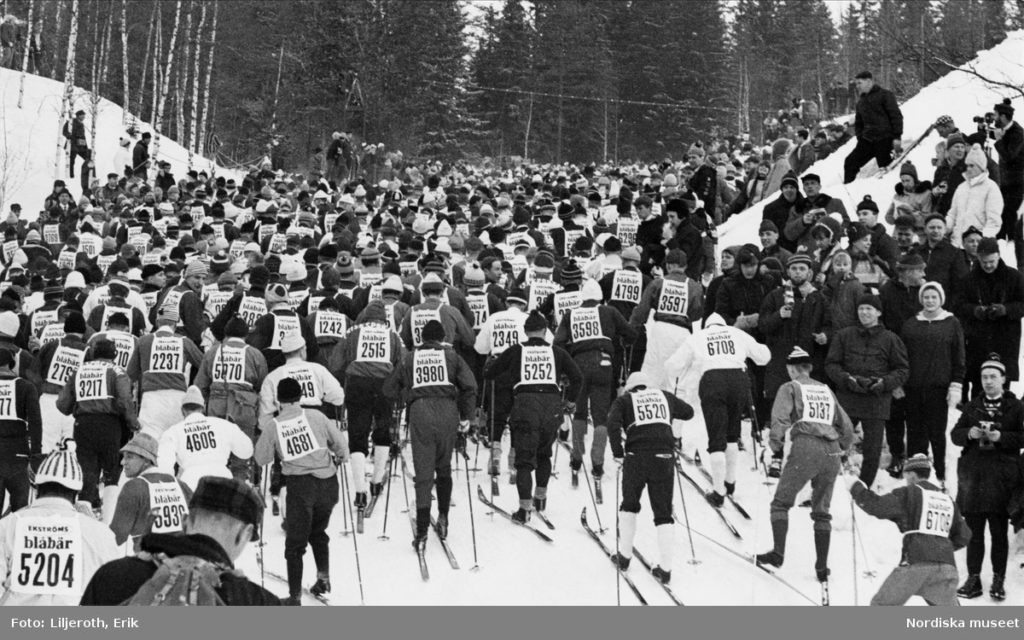
Blueberry soup + Vasaloppet, a match made in heaven?
By now, you might have guessed that blueberry soup has one big association in Sweden: Vasaloppet. This skiing event started in 1922 and repeats yearly ever since (with a few cancelled year because of lack of snow).
Vasaloppet started in honor of the Swedish nobleman Gustav Eriksson’s journey to Dalecarlia in 1520-1521. While parts of the historical documents from his time read as adventure stories (or pure self-glorifying fiction), Gustav Eriksson skied long distances to seek support against the Danish king that had taken the Swedish throne. The powerful men in Dalecarlia (or Dalarna, as we say in Sweden) rejected him first, but then decided to support him when they heard of Stockholm’s bloodbath. Gustav Eriksson was crowned king Gustav Vasa 1523. 401 years after Gustav Vasa’s skiing tour, Vasaloppet started.
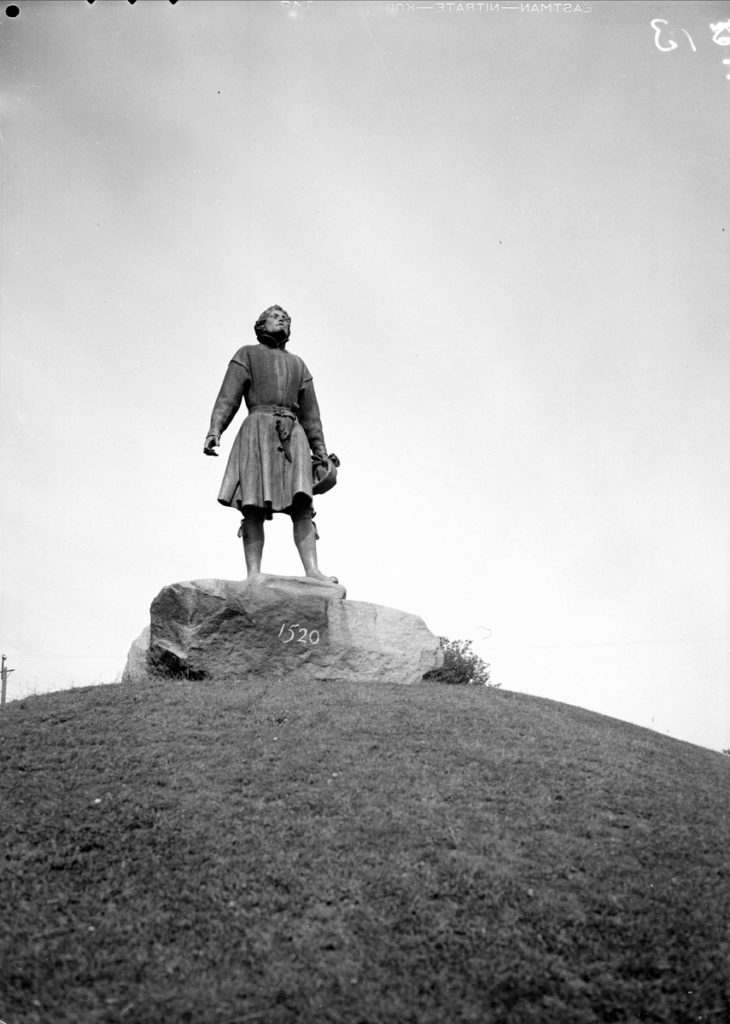
So, why blueberry soup? Well, Vasaloppet is 90 kilometers (or 56 miles) long. The sweet blueberry soup gives energy, is easy on the stomach, and full of antioxidants. Plus, it’s easy to get a mug on the go, which means that skiers won’t be slowed down. Nowadays, the skiers drink 33,900 litres in total, or about 0,6 liters (about 2,5 cups) of soup per person.
Vasaloppet’s communication manager Camilla Sandy Swarén not only pointed me to Hedlund’s funny story above, but also told me that blueberry soup has been served from the start. In the beginning, women would pick and dry blueberries in the summer and use them to make soup for the skiers. Ever since 1958, the company Ekströms provides the blueberry soup.
But you don’t have to go ski Vasaloppet to enjoy some blueberries…
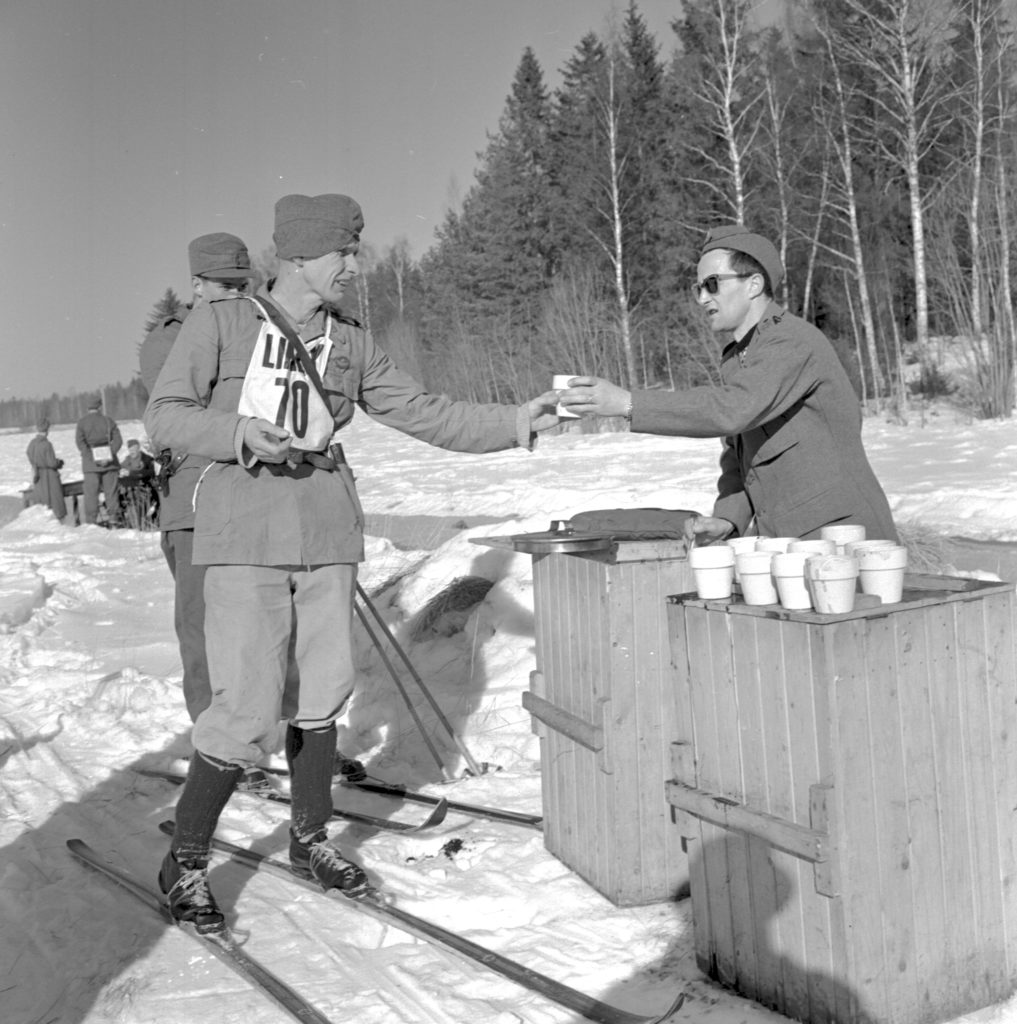
Let’s eat blueberries! (or actually: bilberries)
So, let’s get some terminology out of the way. The Swedish word for blueberry is blåbär. However, when Swedes think of picking blåbär in the forest, these are actually European bilberries. The bilberries look similar to North American blueberries, but are smaller, have a more intense color and flavor, are often less sweet, and—unfortunately—are sensitive to transport.
Yes, although this article uses the terms blueberry and bilberry interchangeably, bilberries are what is native to Sweden. You can of course use North American blueberries instead of bilberries for recipes if that is what is available to you.
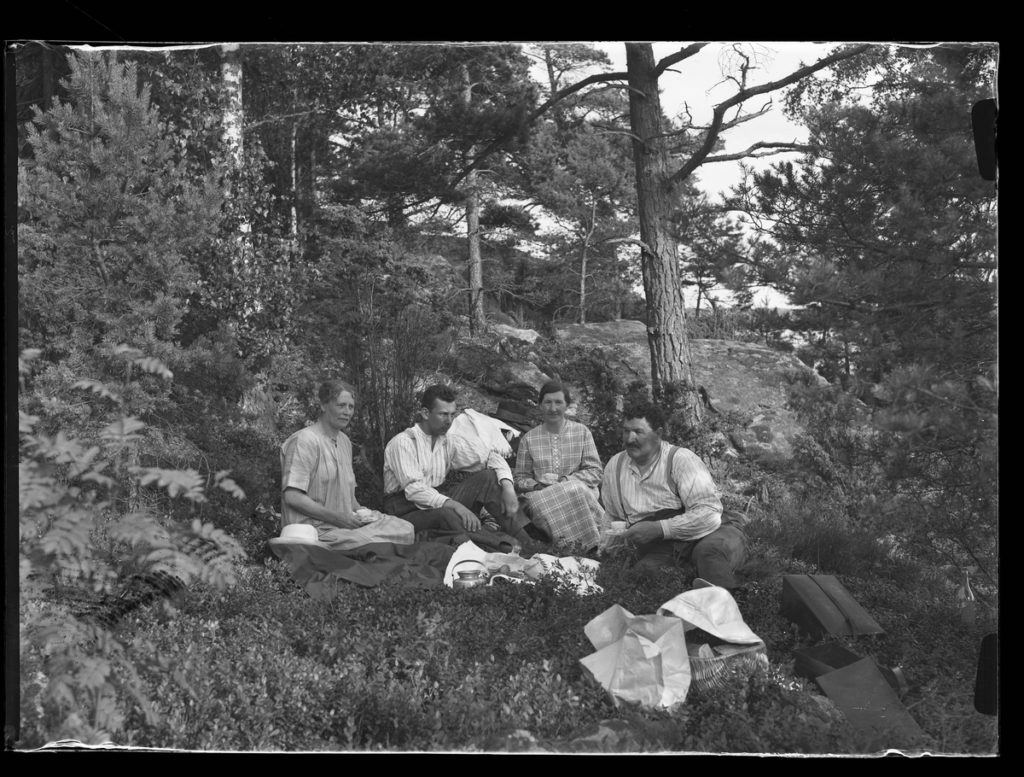
Not all people are as enthused about bilberry eating as I am. In Sundhetzens speghel from 1642, bilberries (along with other berries) are considered a bad idea. The sweet berries lose their flavors easily, lead to excesses and chill your blood (!).
Maybe that’s why blueberries only make occasional appearances in the dozen of cookbooks from the 17th, 18th and 19th century I checked. In 1737, cookbook author Susanna Egerin mentions them the most—blueberry purée, two blueberry cakes, and a “healthy” blueberry wine. Somewhat later, in 1785, Anna Maria Rückersköld’s cookbook suggests that blueberries can be dried and used for healthy soups. For today’s soup eaters, Anna-Maria Zetterstrand’s idea in her 1863 cookbook might seem strange. She suggests serving the soup with “klimp”, a dumpling made from almond-flavored milk that was thickened with flour and left to cool.
Even in the early 20th century, ethnologist Nils Keyland notes how the berries mostly are used in the Finnish areas of the county Värmland (Finnmarkerna). Otherwise, berries in general were looked down upon—they were something for the women and children to pick, or for times of bad harvests.
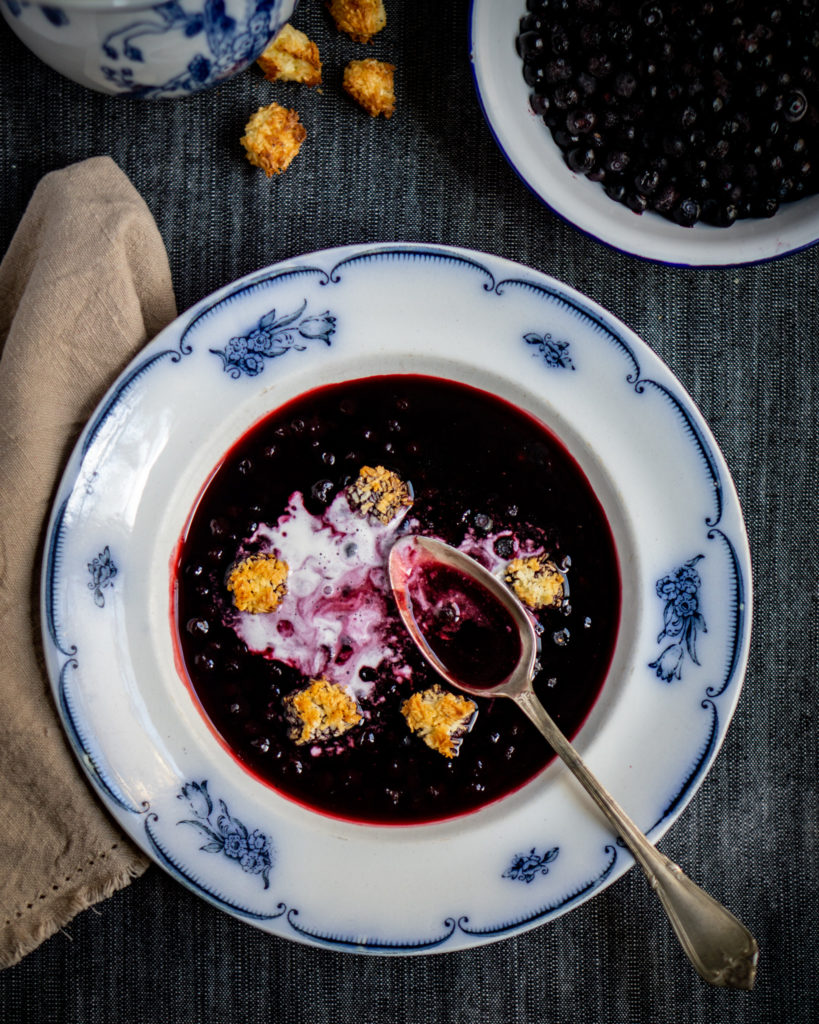
How to make Swedish blueberry soup
Whether you use Swedish bilberries or North American blueberries—this soup is difficult to resist.
A warning though: as delicious as it is, it will stain lips, teeth, and tongues. Meaning: it might not be a convenient for a party, formal dinner, or fancy date. You’d be stunning as always, of course—just a bit more vampiresque, and possibly with tiny blueberry seeds in the gums… Any clothes, fabrics or sensitive materials (wood, marble, etc) caught in the line of fire may also stain, so don’t serve it on your beloved but cracked antique china.
5 dl (2 cups) bilberries or blueberries (frozen is fine)
5 dl (2 cups) water
2-3 tbsp honey or sugar
1 tbsp potato starch or cornstarch + a little water
optional: seasoning such as ground cardamom, a cinnamon stick, or vanilla, or a dash of lemon
- Add the bilberries/blueberries and water in a large pot. Bring it to a boil. Let the berries boil on a medium-high heat for a few minutes.
- Add honey or sugar and stir until it has dissolved. Taste and see if you need a bit more.
- Add any extra seasoning you want.
- Stir out the starch with a little water and stir it into the soup—stir well.
- Bring the soup to a boil. Keep stirring and lower the temperature to medium-high again.
- If you want, use a hand mixer to mix the soup smooth. (I don’t do this though).
- Serve as it is or with extras. Warm or cold, the soup is great with a piece of vanilla ice cream, a dollop of whipped cream, quark, cottage cheese, or even creme fraîche. You can also sprinkle on some chopped nuts, almond macaroons, or coconut macaroons.
Suggestions
If you’re using a cinnamon stick to flavor the soup, let it boil a bit longer to make sure it has the chance to release its flavors.
You can also use apple juice to sweeten the soup, instead of sugar or honey. In that case, substitute 1-2 dl of water for apple juice.
In 1785, cookbook writer Anna Maria Rückersköld suggests adding a handful of raspberries to the soup for a better flavor. Try! Typically, the combination of blueberries and raspberries is referred to as “queen”, as in drottningsylt, queen’s jam. So, queen’s soup, anyone?
Leftovers?
Add the blueberry soup to your smoothie, strain it as a cocktail base (for Halloween?), or thicken it a bit more and trickle it over dessert. You can also strain and dilute it to use as a blueberry cordial.

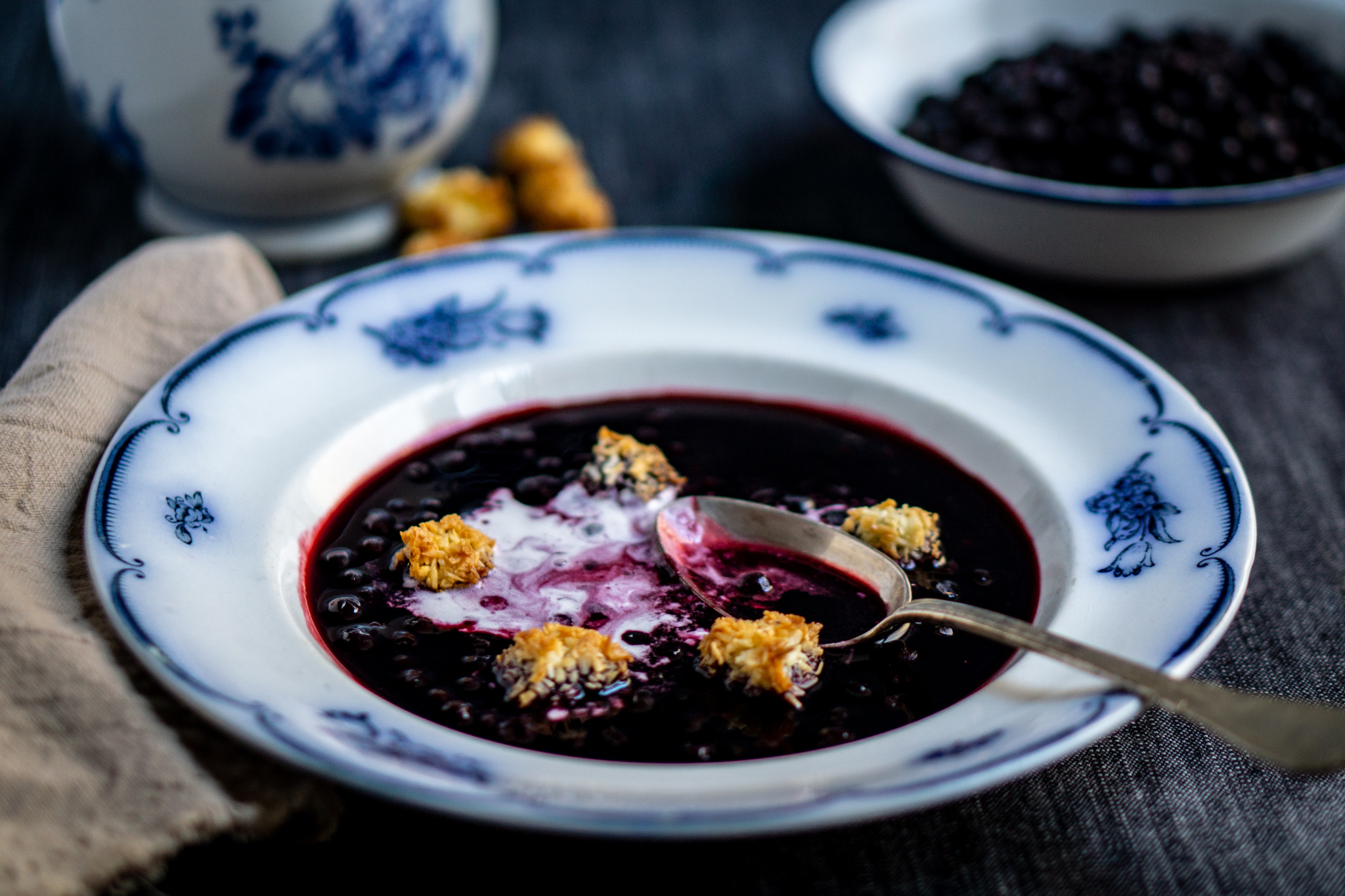

0 Comments
Trackbacks/Pingbacks